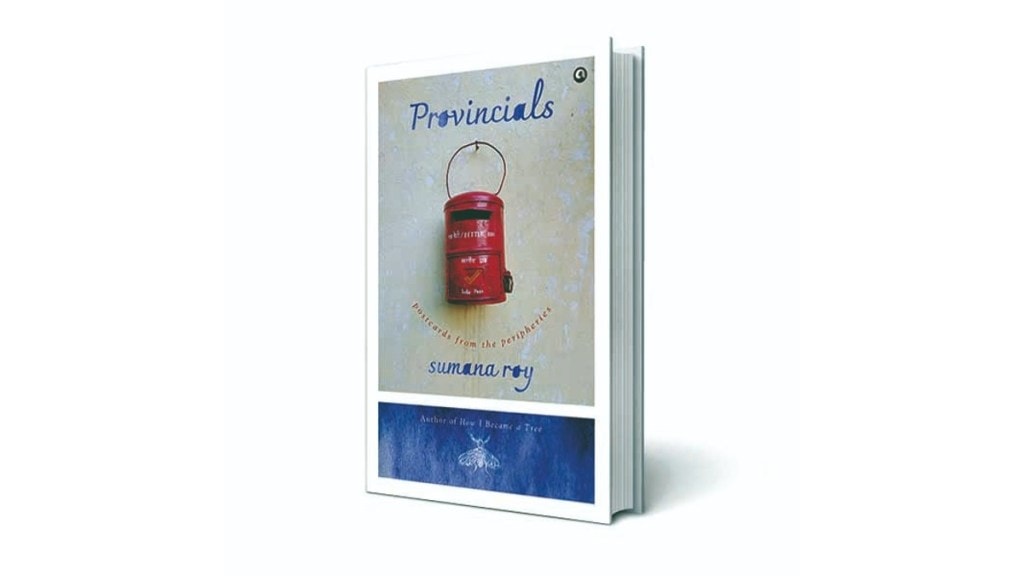By Faizal Khan,
A few years ago, Sumana Roy announced her arrival on the Indian literary scene atop a varying array of trees that tried to root people to nature. Seven years after her bestselling non-fiction, How I Became a Tree, Roy is back with another work in the same genre. This time, Provincials, her new book, aims to link the local with the universal. Roy does that with the help of a melange of characters that peep out of diverse fields and cultures.
The common construct of the province as small, ordinary and unremarkable is the author’s first point of reference. The town of Siliguri in West Bengal where she grew up then becomes the antithesis. “Provincials have been imagined as the other half of a binary; cosmopolitans are the head, we are the feet. The head gives instructions, the feet obey,” writes Roy in the preface to Provincials. There begins a journey to the soul of the small town, a roller-coaster ride that throws out poems to postcards and literature to life’s lessons.
The personal, as Roy paints the picture, is the best way to know a province. When he was a student in Kolkata in the late 1960s, the author’s father went to a city post office to send a telegram to his parents back home in the village. Having spent all his monthly savings on an East Bengal-Mohun Bagan football match, he soon realised a letter was all he could afford. “A letter? Why do poor people have to write letters? And why do poor and illiterate people in the provinces have to receive letters from their children?” barked the official at the counter.
Nothing does better to describe life in the province than language. When he had enough money later, Roy’s father would spend a substantial portion of that on stationery and postage stamps, to write long letters to a young city woman who would later become his wife. The letters contained images of his life in Balurghat, a small town on the India-Bangladesh border.
Language is also a medium sufficiently stocked to pile scorn on the province. While withdrawing money from an ATM in Naxalbari, about 25 km from Siliguri, the author saw a sticker on it that said: ‘Non-Metro’. Another term that has recently come to stick in people’s memory is ‘Urban Naxal’. “That the Naxalite revolution was a provincial uprising is acknowledged in this new term,” writes the author. On May 25, 1967, Siliguri, an ordinary place of tea gardens and rice fields, witnessed an armed uprising by more than 150 peasants holding bows, arrows and spears, who seized 10 tonne of rice along with the fields. The state violently clamped down on the Naxalite movement killing many of its leaders. Charu Majumdar, the movement’s leader, would be discovered dead later, but the ideology spread to other parts of the country, mainly to provinces.
Roy, who set her first novel, Missing, about a blind poet and the disappearance of his wife, in Siliguri, argues that it is a gift to be hidden or lurk at the periphery. “I do not believe that cosmopolitanism and provincialism are antithetical,” she writes. “The forest, which is the most cosmopolitan space I know, one perhaps even more accommodative than the human heart, is also, by virtue of being tied to a place, genetically provincial.”
Faizal Khan is a freelancer.









